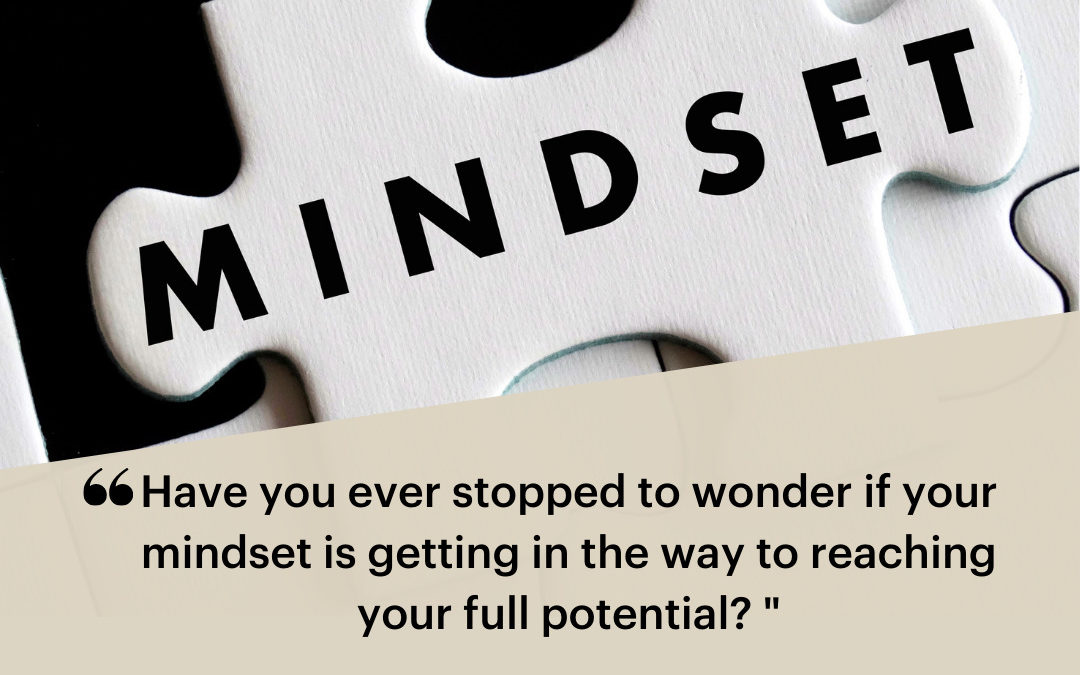Have you ever stopped to wonder if your mindset is getting in the way to reaching your full potential?
According to Dr Carol Dweck there are two basic mindsets – growth and fixed.
Having a growth mindset sees all situations as opportunities to grow and continually evolve. It’s unconcerned about mistakes and failure, putting all experiences down to learning encounters. Rather than expressing frustration towards a situation “Why is this happening to me?”, a growth mind enquires “What is this situation trying to teach me?”. It’s views failure as not growing, not reaching what you value, and not fulfilling your potential.
A fixed mindset on the other hand is concerned about mistakes and failures, and focus is on validating self and intelligence. It views failure as a setback.
The good news is a mindset is a series of beliefs that can be challenged and changed if they no longer serve us.
A person with a fixed mindset usually has one for a reason, it has served them well and validated who they were or wanted to be. It’s aided self-esteem and provided a pathway to acceptance from others over the years. Replacing a fixed mindset with a growth mindset asks you to embrace all challenges, setbacks and criticisms which can get rather uncomfortable when this is unfamiliar territory, especially when we like full control.
However, we all want to reach our full potential right? Being open to growth takes you closer to reaching your potential and being your true self. To do this we need to put ourselves in unfamiliar situations so we can grow and evolve
So, what steps can be applied to tune up a mindset?
- Change your narrative – perhaps you’ve been telling yourself (and others) the same story and wonder why you’re getting the same outcomes. Flip the switch. Begin to take note of your language in the moment and make a choice to shift your thinking if it no longer serves you. For example if you keep telling yourself “It’s better to stick to what I know”, change to “I want to explore new ideas”. Instead of saying “I can’t do it”, replace with “I can do it”.
- Change performance goals to learning goals and make sure they are realistic and achievable providing enough tension to create tenable challenge. For example, rather than aim to write a book in a month and fail to achieve that goal due to time constraints, decide to write a minimum daily word amount that takes you closer to your goal while learning about self and the process which is all part of the journey.
- Review your failures and work out what did work for you and what didn’t and then learn from those errors.
- Ask for constructive genuine feedback from others both positive and negative from those you trust and have your best interests. When you get to the negative, see this as a learning opportunity rather than a personal attack on your character, which can be extremely challenging when our values have been shrouded by a fixed mindset.
- Become passionately curious and develop an agile mind. Ask “If I couldn’t fail what would I do in this situation? ” providing a different prospective for consideration.
Regardless ensure you are surrounded by a tribe who support, challenge, and encourage you to grow and evolve to become the best version of YOU! It’s a journey so be kind to yourself; we are all a work in progress. If you need professional assistance to help you on this journey of self-discovery engaging a qualified career coach may be the answer.
Remember our mindset plays a big role in how we view the world. We can create our reality!
THOUGHTS + ACTION = RESULTS
Dweck, C. (2017). Mindset-updated edition: Changing the way you think to fulfil your potential. Hachette UK.

